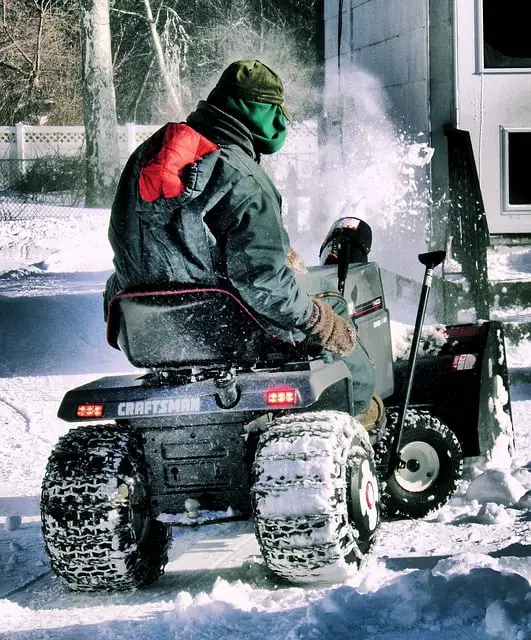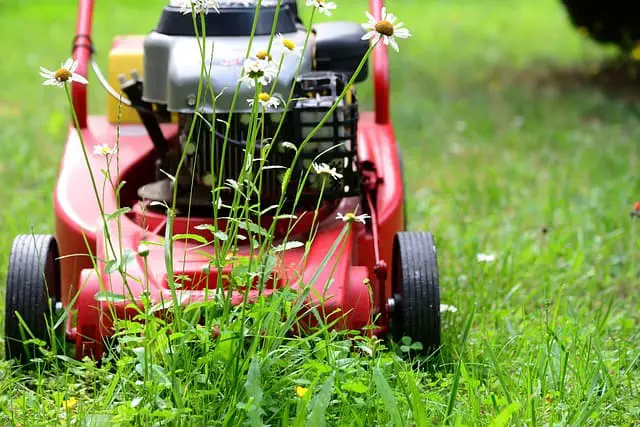Typically, Kubota costs much less than John Deere. However, John Deere holds its resale value much better than Kubota. This is because of the materials each brand uses on their equipment and how quickly it depreciates with time and use.
That said, there are many excellent qualities both manufacturers possess that are desirable for any sized farming operation. But, before jumping into either type, it’s best to inform yourself about the differences. While smaller operations may need something cost-effective, larger farming jobs will require something more durable.
Why Does John Deere Keep Their Resale Value Better Than Kubota?
There are several factors as to why John Deere retains its resale value better than Kubota. Mainly, John Deere tractors comprise polymer panels which make it durable and stronger than standard metal. Kubota tractors ding, rust, dent and fade due to the metal panels.
Also, the color holds better on a John Deere than it does Kubota. When there’s a pink fade in the paint of a Kubota, there aren’t cosmetic repairs you can do. With a John Deere, on the other hand, a buff and wax will shine the polymer right up.
It’s the quality of engineering and construction, along with long-lasting materials that prevents severe depreciation in a John Deere. So, in some cases, you may find the price not much less than the original sale value.
How Much Should You Pay for Kubota?
Depending on how large the tractor is you’re looking at, a Kubota can be as little as around $10,000 for their BX series compact tractor line or as much as $23,500 for their L series full-sized tractors. You can find these used between $5,000 and $15,000, respectively.
How Much Should You Pay for John Deere?
The median price for a John Deere will range between $35,000 and $50,000. But compact and subcompact tractors can be as little as $12,000 whereas full-sized tractors can be well in excess of $200,000.
If you want to find a used John Deer, you can find them between $8,000 and $50,000 or more. Of course, this will depend on the size and age of the machine.
Which Kubota Models Are Most Popular?
Kubota is a trusted brand in the tractor industry and they produce quality equipment at a decent price. The list below indicates some of the more popular Kubota tractors, but there are many more:
- L4600HD: For an engine with 46.3 HP, this tractor features hydrostatic power steering that can lift up to 1,300 kg. There are both eight forward and backward gears, making it ideal for any soil type. It costs around $28,000.
- L5740HDCA: This tractor offers comfort and luxury complete with air conditioning. Costing around $31,000 new, it has a powerful 57 HP engine, which means it can handle any landscape and it’s incredibly durable.
- MU4501 2WD: A tractor with eight forward and four reverse gears, it has 45 HP and lifts up to 1,640 kg. It’s great on fuel and has incredible engine power. You can usually find these for around $50,000 new.
- M5-111: When you need a tractor for heavy-duty work, this one has power steering with 105.6 HP. It’s great on rough terrain and costs around $61,000.
- MU5501 2WD: This also has eight forward and four reverse gears for the utmost in traction power. It has updated tech that makes using the machine easy and comfortable. With 55 HP, it can lift a capacity of up to 2,100 kg and comes with a price tag of around $75,000.
What Are the Best Selling John Deere Models?
John Deere is a little more painful in the pocketbook but they have a larger range of very desirable tractors. The ones mentioned below are popular choices for farmers and homesteaders alike.
- 5042 D: With a 44 HP engine that’s also affordable, this tractor comes with perks like a digital hour meter and water separator. There are a host of features that’s worth looking into and it only uses a moderate amount of fuel. The tractor costs around $45,000.
- 5050 E: This tractor has a four-wheel drive axle, making it great for rough terrain. It’s quiet and uses fuel efficiently. You can find one of these for about $51,250.
- 5310: The fuel-saving capacity of this tractor is very desirable, with a 65-Liter tank. It has 55 HP and power steering with optimal braking efficiency. A variety of terrain and soil conditions are suitable for this machine and it costs around $51,250.
- 5045 D Power Pro: Durable and highly efficient, this tractor is great on fuel with a 60 Liter tank capacity. It’s good for dry and wet land while also being powerful enough for almost any kind of farming purpose. It has 45 HP with a 1,600 kg lifting limit. The tractor costs around $56,000.
- 6120 B: One of the more affordable heavy-duty models of tractor, this one has 120 HP. The fuel tank holds 220 liters and is most ideal for heavy operations. But, you’re looking at a price tag of around $98,000.
Which Is Better? Kubota or John Deere?
Because both manufacturers offer quality and well-built tractors, it will really depend on the intention of use. For small gardening operations or because you need a tractor to haul cargo, then either one you can find for a decent price will be fine.
However, if you’re looking to do multiple jobs with a tractor or need one to handle rougher terrain, then you’re going to want a John Deere. While you will pay a little more than you might want to, it will be worth it in the end.
Not to say that Kubota isn’t a reliable brand, but with a John Deere, you can be confident in what you’re getting. When you buy a John Deere, you’re paying for the quality of engineering along with the super strong polymer plastics it comprises. Plus, parts and repair will be easier in case something does happen since they are readily available almost everywhere.
Hi, I’m John Stephens, chief editor and writer for Totalgardener.com. I’ve been gardening and raising animals for over 15 years starting with a small backyard plot in Northern Virginia where I grew corn, potatoes, squash, and using a high mulch technique called the Ruth Stout Method. I also raised ducks and small mammals for meat and eggs in a movable pen similar to the ones used by Joel Salatin. I later moved to Colorado where I experimented with growing greens using aquaponics inside. I eventually added a microgreens setup and home sprouting operation. I’m excited to share everything I’ve learned plus more from the other local gardening and animal raising experts I know.



